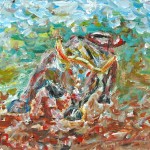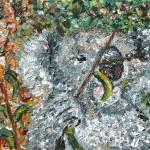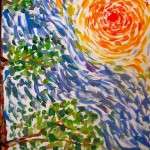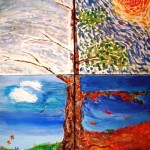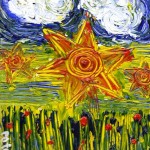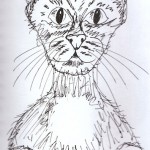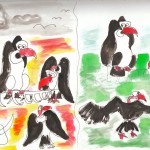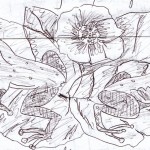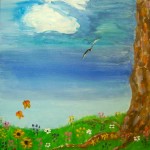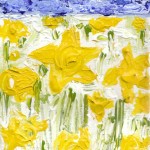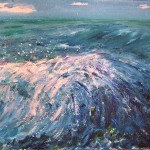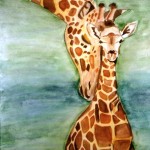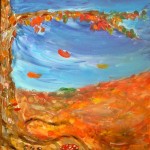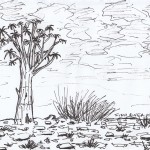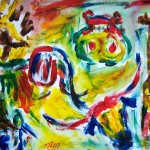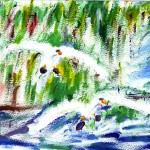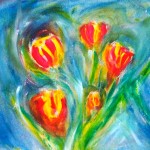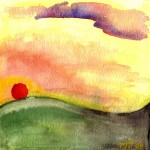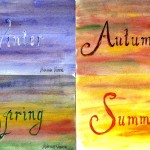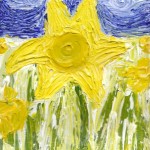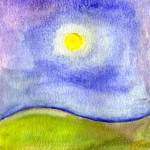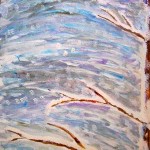“This is war!”
So my son tells me
And my daughter agrees
But I have some questions
I don’t really like wars
Or making enemies
So tell me …
If this is war
What are we fighting for?
We are fighting for the earth:
For the birds of the air
And the fish of the sea
For the sick in the villages
And the hungry in the cities
If this is war
Where are the battlefields?
The planet is our battlefield:
The smoky plains of the skies
And the murky streams of the oceans
The burning lungs of the forests
And the aching hearts of the people
If this is war
Who is the enemy?
The enemy is our separation:
Hiding behind fences of politics
And sheltering in dugouts of religion
Lurking under shadows of economics
And camouflaged in masks of progress
If this is war
Who are our allies?
Our allies are ordinary people:
The luminous tribes of the South
And the caring villages of the North
The rising tides in the East
And the changing winds in the West
If this is war
What are the weapons?
The weapons are our faith:
Our fortress of courage to hope
And our bedrock of belief in justice
Our wellspring of creativity for solutions
And our fire of passion for change
If this is war
Where is the battle?
The battle is where you are:
Around the fires of your homesteads
And the tables of your boardrooms
In the aisles of your supermarkets
And on the wires of your networks
If this is war
Who are the losers?
The losers are prejudice and vice:
For judgement is the father of fear
And power is the mother of pride
For hatred is the child of ignorance
And greed is the orphan of isolation
If this is war
Who are the winners?
The winners are life and love:
For diversity flourishes with freedom
And hope blooms with compassion
For development spreads with peace
And purpose calls to us all
This is war then!
So my children tell me
And I for one believe them
I still don’t like the talk of battles
But I think they are right
The future – their future –
Is worth fighting for
Wayne Visser © 2007
Book
Wishing Leaves: Favourite Nature Poems
 This creative collection, now in its 3rd edition, brings together nature poems by Wayne Visser, celebrating the diversity, beauty and ever-changing moods of our planet. The anthology includes many old favourites like “I Think I Was a Tree Once” and “A Bug’s Life”, as well as brand new poems like “Monet’s Dream” and “The Environmentalist”. Then as we turned our faces to the moon / Our hands entwined, our hearts in sync, in tune / We felt the fingers of the silken breeze / And made our wishes on the falling leaves / A gust of wind set off a whispered sigh / Among the trees that leaned against the sky. Buy the paper book / Buy the e-book.
This creative collection, now in its 3rd edition, brings together nature poems by Wayne Visser, celebrating the diversity, beauty and ever-changing moods of our planet. The anthology includes many old favourites like “I Think I Was a Tree Once” and “A Bug’s Life”, as well as brand new poems like “Monet’s Dream” and “The Environmentalist”. Then as we turned our faces to the moon / Our hands entwined, our hearts in sync, in tune / We felt the fingers of the silken breeze / And made our wishes on the falling leaves / A gust of wind set off a whispered sigh / Among the trees that leaned against the sky. Buy the paper book / Buy the e-book.


 This creative collection, now in its 3rd edition, brings together nature poems by Wayne Visser, celebrating the diversity, beauty and ever-changing moods of our planet. The anthology includes many old favourites like “I Think I Was a Tree Once” and “A Bug’s Life”, as well as brand new poems like “Monet’s Dream” and “The Environmentalist”. Then as we turned our faces to the moon / Our hands entwined, our hearts in sync, in tune / We felt the fingers of the silken breeze / And made our wishes on the falling leaves / A gust of wind set off a whispered sigh / Among the trees that leaned against the sky.
This creative collection, now in its 3rd edition, brings together nature poems by Wayne Visser, celebrating the diversity, beauty and ever-changing moods of our planet. The anthology includes many old favourites like “I Think I Was a Tree Once” and “A Bug’s Life”, as well as brand new poems like “Monet’s Dream” and “The Environmentalist”. Then as we turned our faces to the moon / Our hands entwined, our hearts in sync, in tune / We felt the fingers of the silken breeze / And made our wishes on the falling leaves / A gust of wind set off a whispered sigh / Among the trees that leaned against the sky. 
